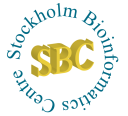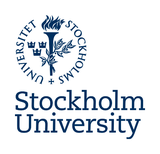|
|
|
[ Jump to Conferences ]
SBC seminar series, 2013
Every second Tuesday, at 10:30.
Lunch room floor 2, Science for Life Laboratory, Tomtebodavägen 23A, Solna.
Please note: Time and location may vary; please check the information below
Seminars by external speakers are scheduled as long in advance as possible, while those by internal SBC speakers are only scheduled
for two months ahead and are held according to a rolling
schedule. If you want additional information about the SBC seminars by
email, please join our mailing list seminars@sbc.su.se.
(List of previous seminars from 2013 is here).
| Wednesday December 18 | 10:00
| Sofia Haglund | Stockholm University
|
| Lunch room at Scilifelab, alpha floor 2
| Identification and characterization of some of the most topologically
varied membrane protein families
|
|
Membrane proteins are essential for life. It has been estimated that about a
quarter of all human genes are encoding membrane proteins and they play a
vital role in many biological processes. The specific environment of the
membrane proteins puts constrains to their structures and let them
generally be composed of a set of transmembrane helices connected by loops
locating either inside or outside of the membrane. Such structures can
therefore be described as topologies. The topology of membrane proteins within
protein families are thought to be conserved in evolution due to the notion
that structure is more conserved than sequence. However, recent studies show
that topology variation such as internal gene duplication and topology
inversion do exist among homologous proteins. Nevertheless, a systematic study
of the topology variation within protein families is lacking. Here, we
identify four protein families that are among the most topologically varied
protein families by multiple alignment of topologies within proteins families
aided by the phylogenetic tree. They are Mechanosensitive ion channel (PF00924),
Cytochrome C assembly protein (PF01578), MotA/TolQ/ExbB proton channel family
(PF01618), and (FtsX-like permease family) PF02687. We show that the topology in
PF00924, PF01578 and PF01618 varies mostly by insertions/deletions of a few
transmembrane helices at the N- or C-termini, and PF02687 varies mostly by
internal gene duplication. Finally, the potential biological background to the
topology variation in these families is also discussed.
|
Previous seminars at SBC:
2003,
2004,
2005,
2006,
2007,
2008,
2009,
2010,
2011 and 2012.
Viktor Granholm
|



